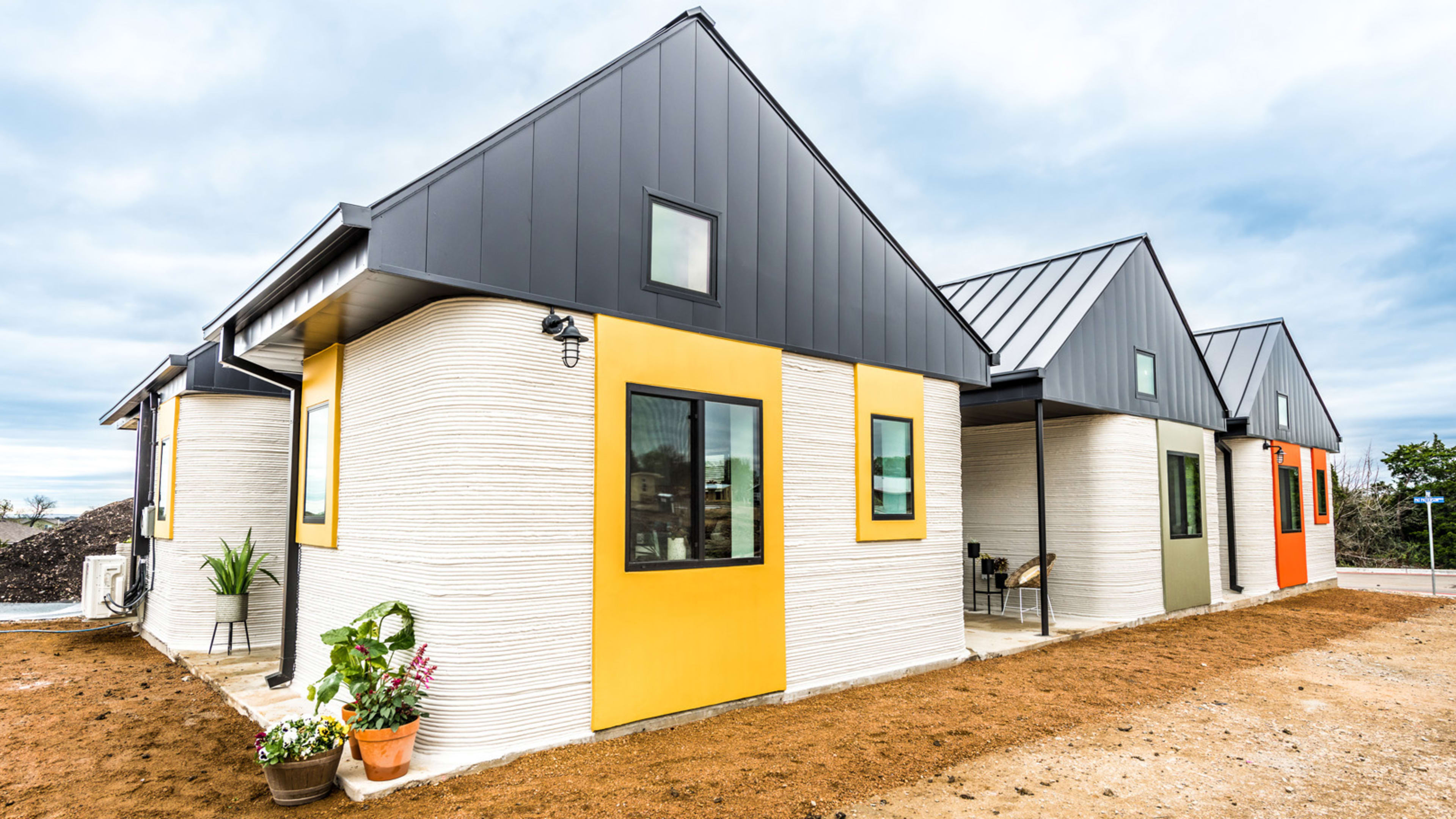For the last few years, Tim Shea has lived in an RV in a small community outside Austin that was designed for people who were once chronically homeless. In early May, he’ll move from the RV into one of the community’s first 3D-printed homes—a small house with walls made from a concrete-like material that were automatically extruded from a giant, 33-foot-long machine.
“It’s amazing,” says Shea, who has been watching the new home rise from his RV. “Sometimes I’ll just stand at the end of the property for an hour and watch them work.”
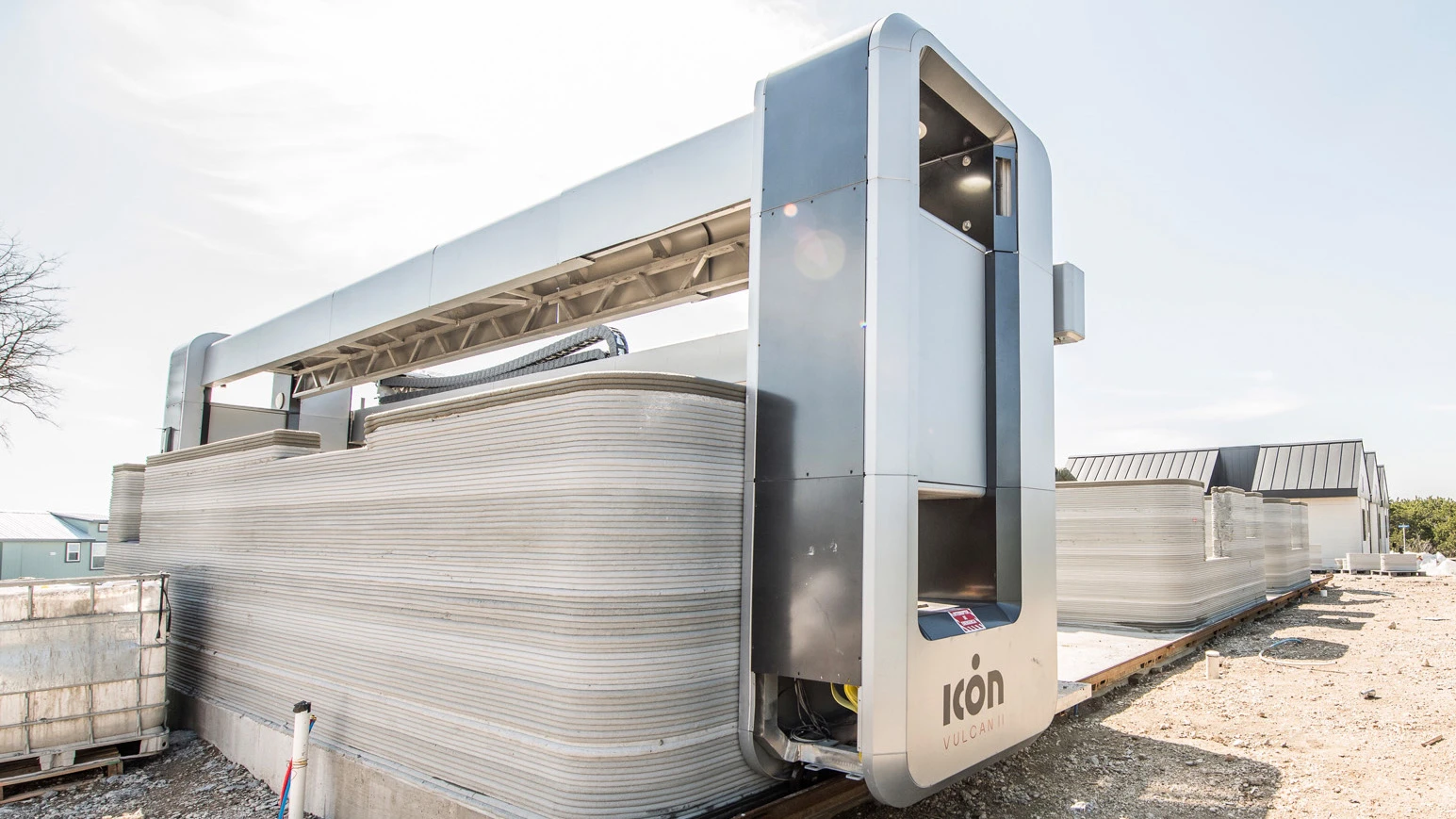
Icon, the Austin-based startup that designed the 3D printer, is building six small homes on the site, called Community First! Village, and recently began using the same technology to build homes in Mexico for people living in extreme poverty, creating the world’s first 3D-printed neighborhood. The company believes that 3D printing can help substantially drive down the cost of housing.
“When we were first trying to imagine how we could use technology to tackle the global housing crisis, we couldn’t find anything else that had all of these promising advantages,” says Jason Ballard, Icon’s cofounder and CEO. First, since the printer can work autonomously and continuously, it’s a faster way to build. “Right now, even if all builders in America were working at capacity, we still wouldn’t be building houses even to achieve replacement rate for the houses that are falling apart or getting too old, much less deliver housing for all the population growth in a lot of major urban and desirable areas,” he says. While many argue that it makes sense to build new apartment buildings in urban areas rather than single-family homes, he believes that small single-family houses can still play an important role in many areas, and many people prefer to live in them.
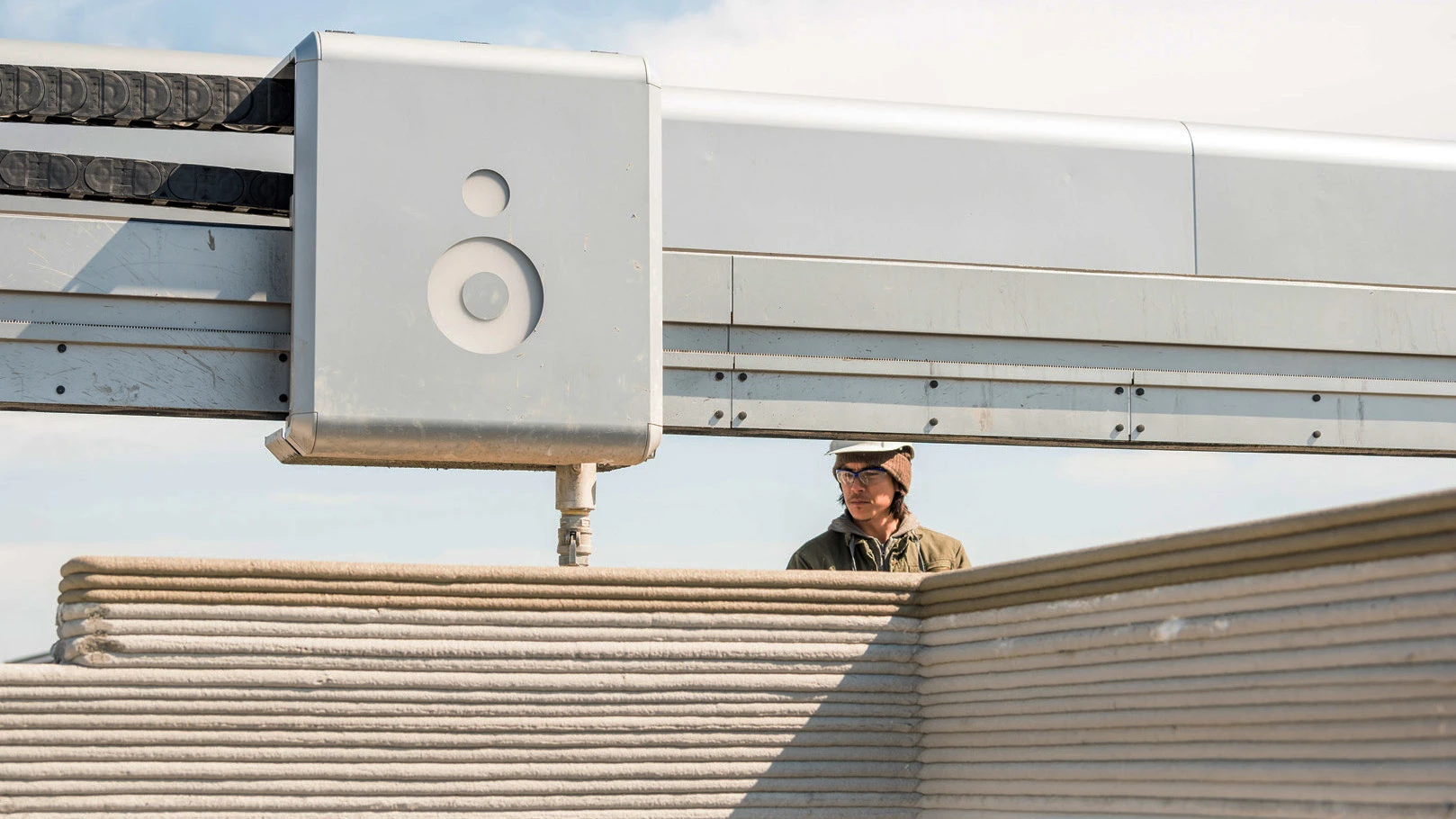
At the site in Austin, the printer worked on three houses simultaneously, each with a different design, as it used a digital blueprint. The printer squirts out layers of the company’s custom, low-cost material to build walls as high as 8.5 feet and as wide as 28 feet; the walls for a single small house can be completed over 24 hours.
For now, the rest of the house is built traditionally. Workers prepare the site and lay a foundation, and after the walls are printed, they add the roof, windows, doors, and electrical, and plumbing systems. The printer replaces the traditional methods of building the structure, insulation, sheathing, moisture barrier, and finishing. The company is also beginning to experiment with adding plumbing and electrical systems into the 3D print. “Depending on how you’re counting, we’re replacing five or six different trades and potentially 20 to 30 humans on an American project with one automating technology that can be operated with three people,” says Ballard.
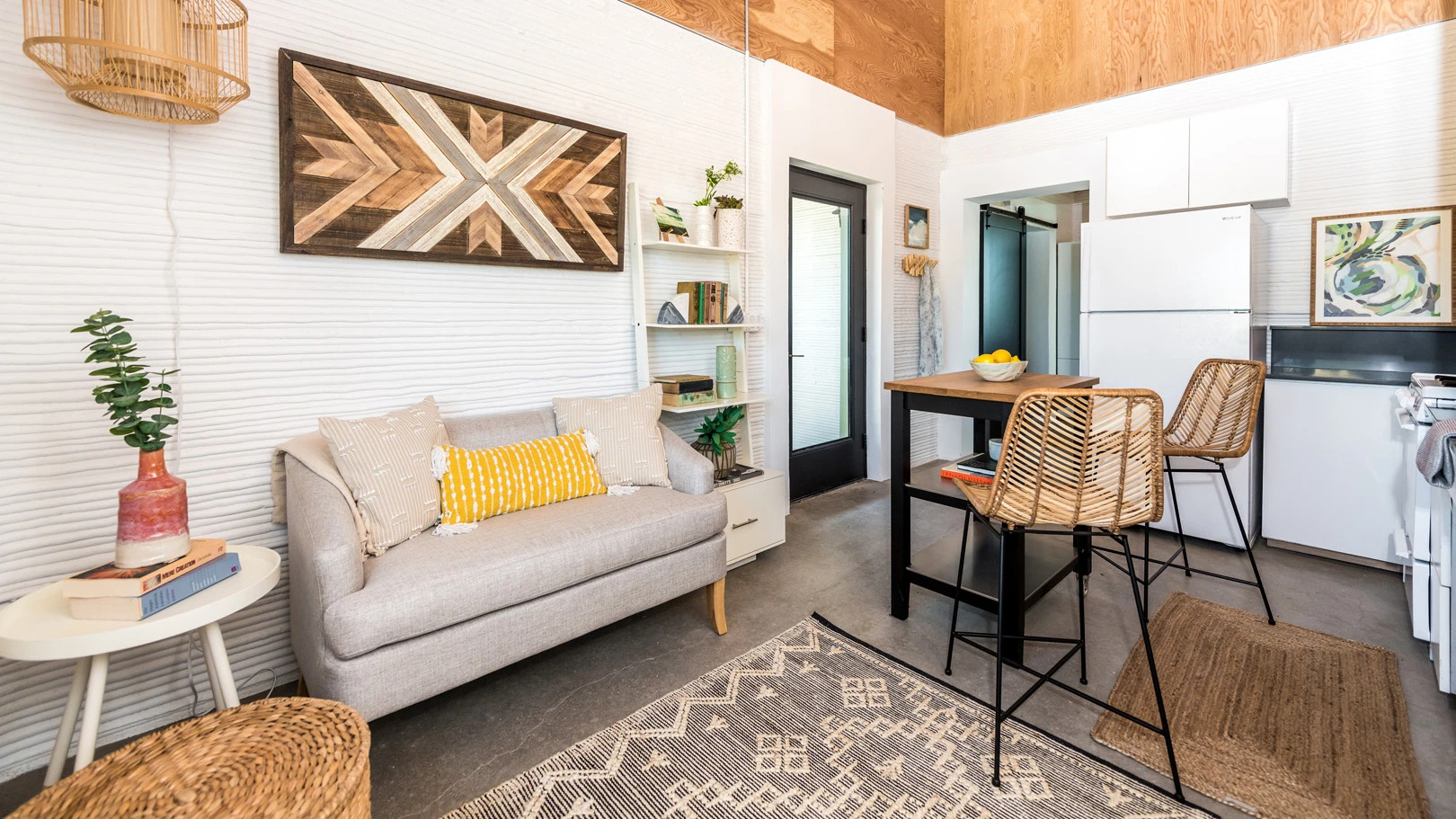
Automation, combined with the low cost of the material, means that houses can be meaningfully less expensive to build. Though the technology is still at an early stage and the company won’t yet share costs, it believes that it will ultimately be possible to print a home at half the cost of traditional construction, in half the time.
The material is also more resilient in disasters like hurricanes than a traditional stick-built house. That’s one reason that it could be especially useful for affordable housing. “Typically what happens with low-income housing, or certainly housing for the homeless people—tiny houses or otherwise—is you’re on a really slim budget, and you’ve got to use the cheapest materials possible, which means these houses experienced system failures and issues and problems very early,” Ballard says.
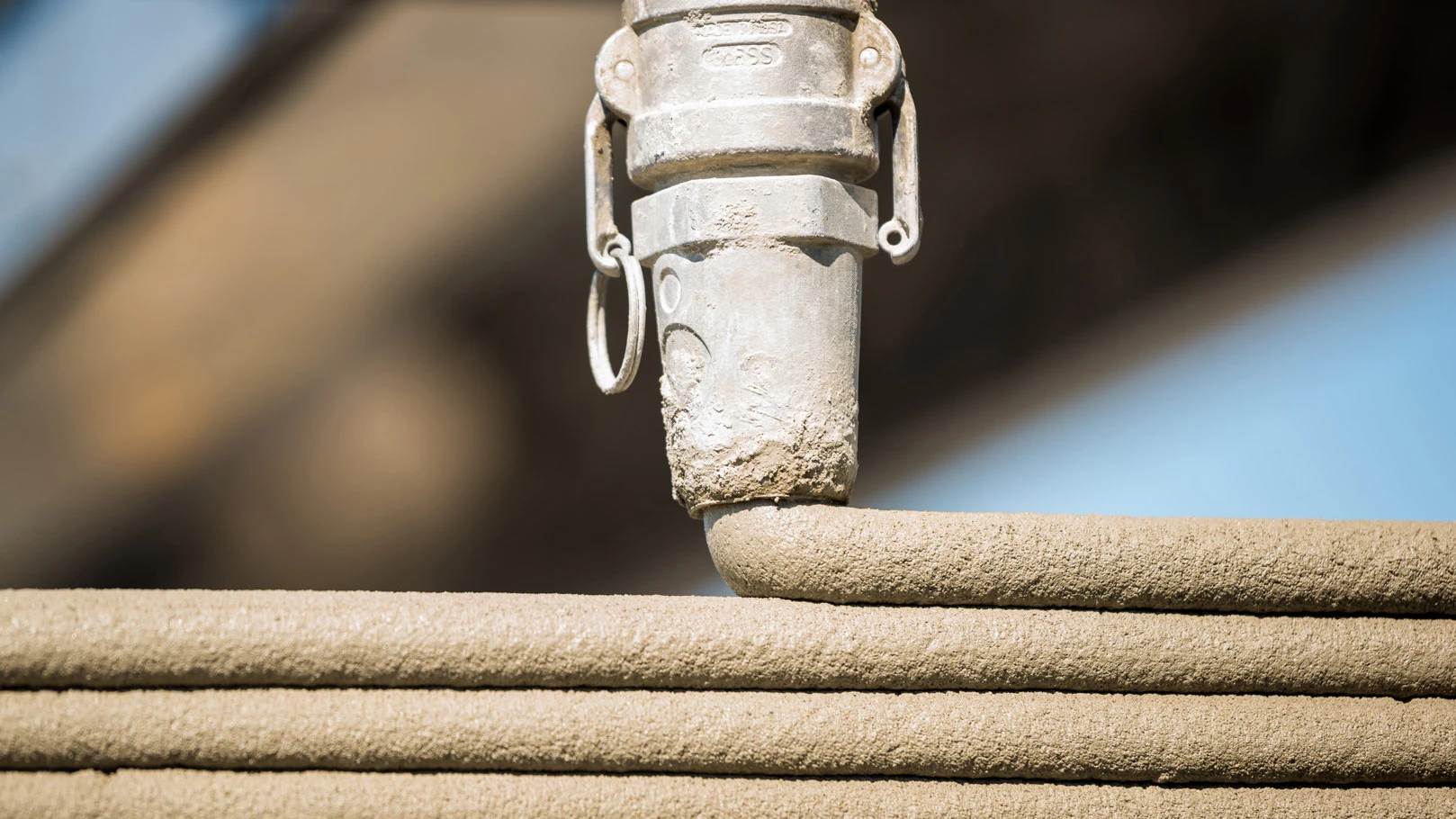
When Shea toured the home where he will live, he immediately noted the differences to his life in an RV. “I was talking to one of the mechanics, who said, you’ll never have to worry about air seeping in, like an RV, where you have a lot of leaks.” The layout, though small, also feels far more spacious. Shea, who is nearly 70 years old, chose an open floor plan because he has arthritis and may eventually need to use a wheelchair. The high walls have large windows. “If you’ve lived in an RV for a while, it’s really nice to have some big windows,” he says.
For Community First! Village, choosing to test the new technology was a natural extension of its willingness to experiment. The community was established in 2015, created by real estate developer Alan Graham, who had spent the past two decades volunteering on the streets of Austin through a project called Mobile Loaves and Fishes. Rather than just providing housing to those experiencing homelessness, Graham wanted to provide a true sense of community.
The village, filled with tiny houses and RVs, was inspired in part by his experience traveling in RV parks, where neighbors naturally gathered outside. The village has outdoor kitchens, a dog park, a garden, a community market, and other places for people to meet and talk. “There’s all activities to bring you out of the house and to interact with each other and support each other,” says Shea, who moved into the community after struggles with addiction and arthritis forced him to stop working and had pushed him into homelessness. “And I think we all know that that’s the way to live.”
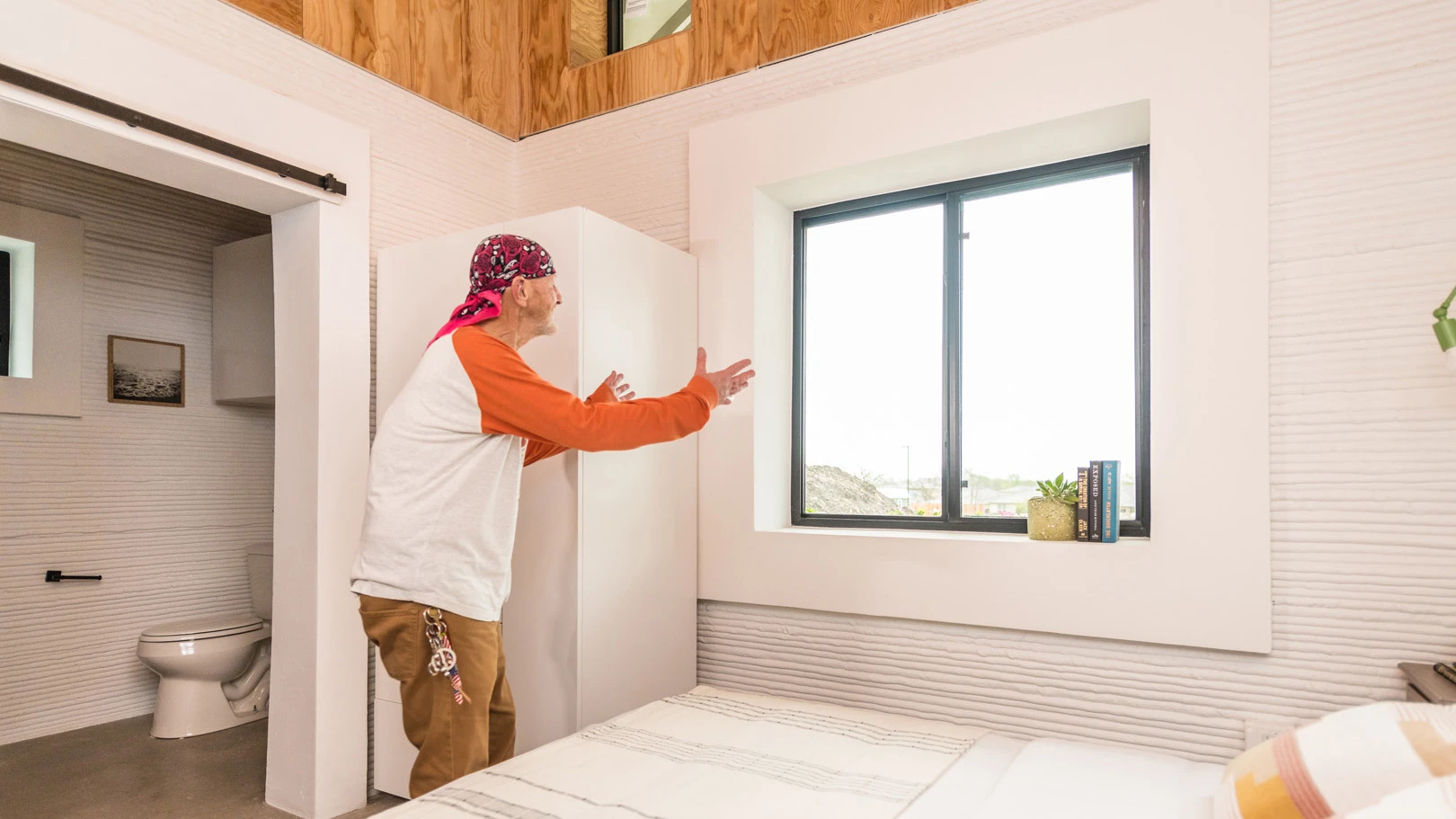
There are more than 200 homes in the community now, and as it expands to add more than 300 additional homes, Shea is moving into the new section to help welcome new residents to the community. Icon’s six new houses—paid for by Mobile Loaves & Fishes and supporters of the organization—will sit next to other types of housing, including larger “park model” RVs. The community may add more 3D-printed homes. “We’re going to be growing,” Graham says. “We’re adding more land and we’re certainly interested in having conversations with these guys about continuing their beta of this product in the U.S.”
While the village is outside Austin’s city limits, and Graham says they benefit from the lack of zoning laws in Texas—making it far easier to build tiny houses than it would be in other states—the technology could also help bring more housing to more conventional neighborhoods. “It allows you to build a higher quality of housing for these populations of folks,” Ballard says. “That, I think, also helps perhaps overcome NIMBYism. There’s been a huge problem that nobody wants housing for the homeless in their neighborhood or nearby, and part of what they’re reacting to is probably a fear of the unknown. But there’s also a really practical, ‘I don’t want to lower my house value, I don’t want it to be ugly.’ I think if you were able to go out and see the houses we’ve built, I can’t imagine very many Americans of goodwill would have any problem at all with this. It allows you to inject not just resiliency but also beauty and dignity into the equation.”
Recognize your brand’s excellence by applying to this year’s Brands That Matter Awards before the early-rate deadline, May 3.
